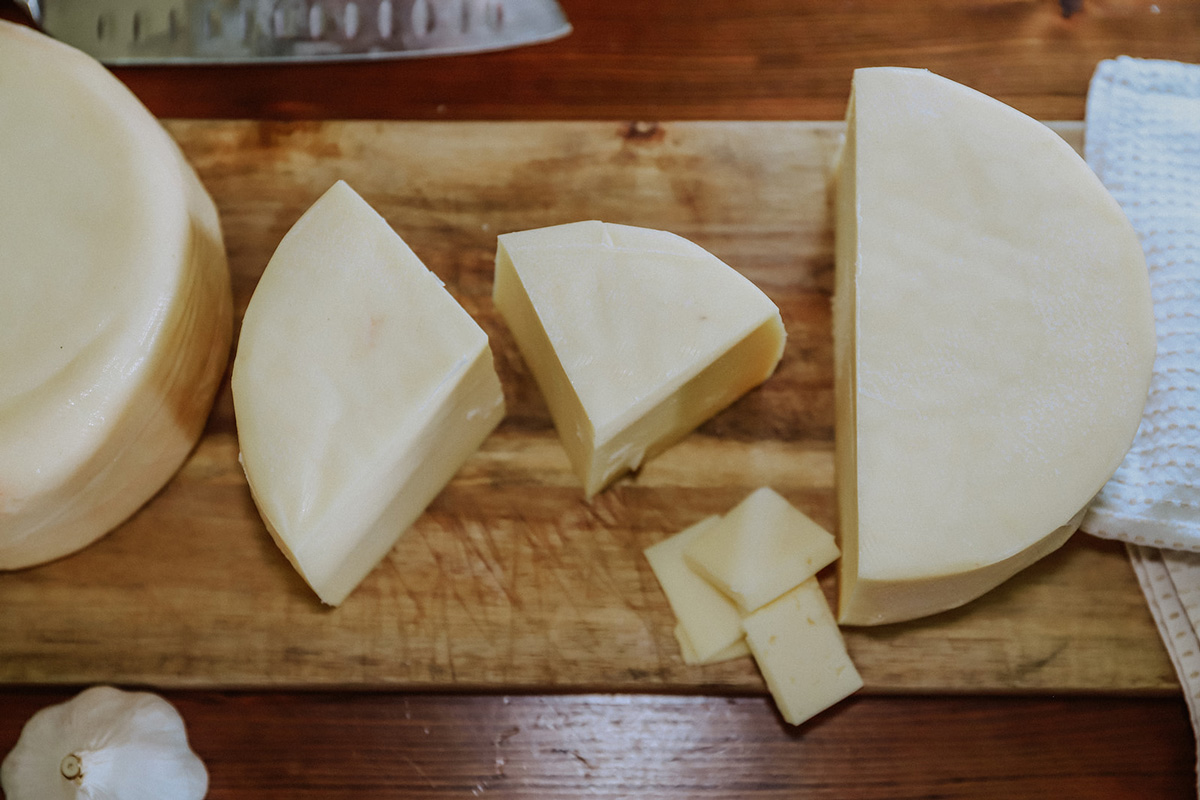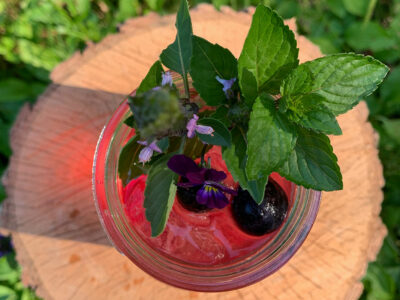Have you wondered what natural cheese making is and how it differs from making cheese with store-bought cultures? Join me in this podcast with Robyn Jackson from Cheese From Scratch as she shares her years of knowledge with us.
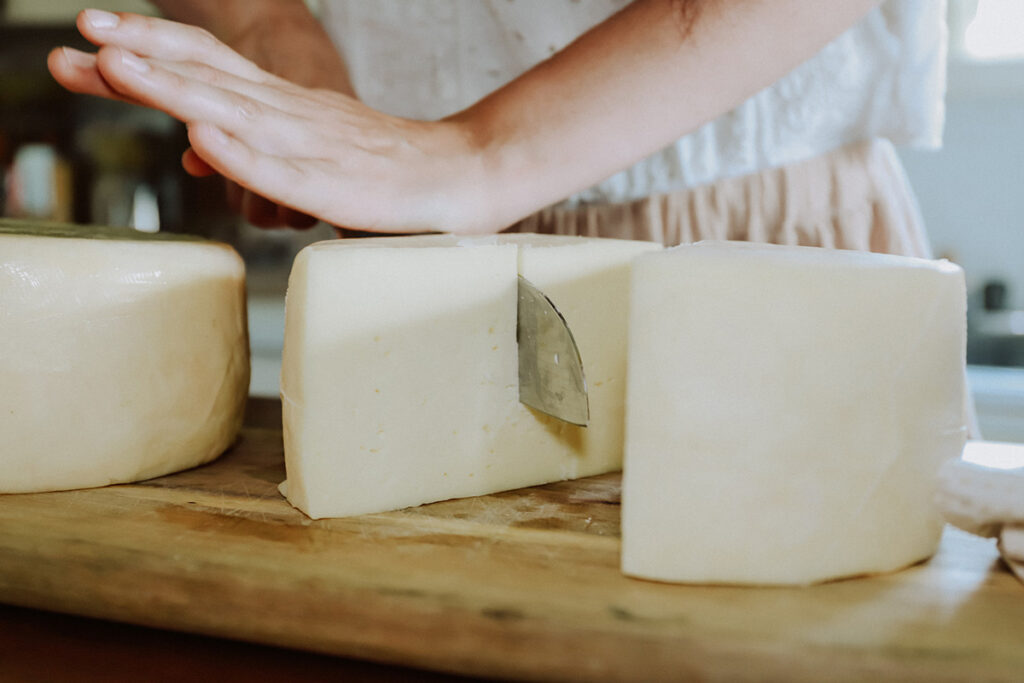
Today’s guest on the Pioneering Today Podcast (episode #384) is Robyn Jackson from Cheese From Scratch. Robyn is a wealth of information when it comes to raising a dairy cow and turning it into natural cheese using “clabber.”
You don’t have to own a dairy cow to learn from Robyn! In this episode, she’s taking us back to how cheese was made traditionally before the use of cultures or direct-set items.
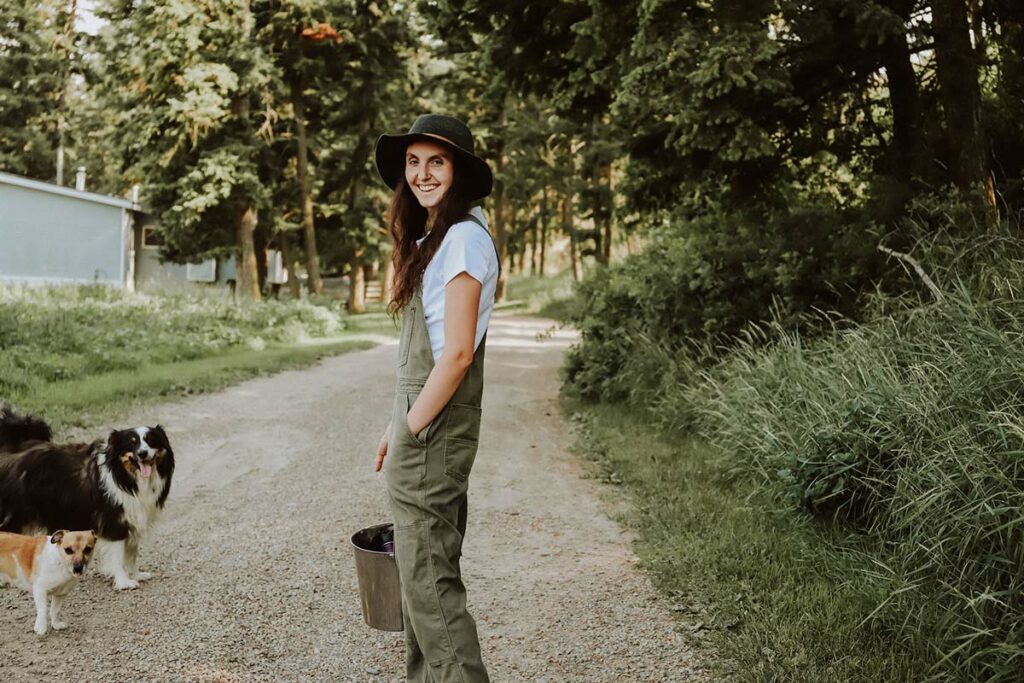
Table of Contents[Hide][Show]
- About Robyn
- What Makes a Good Cheese Maker?
- The Inconsistencies of Milk
- Azure Standard
- The Importance of Cheese-Making
- The Four Steps of Cheese-Making
- Natural Cheese-Making Day Strategies
- What is Clabber?
- How to make cheese starter culture
- Natural Cheese-Making vs. Cultured Cheese-Making
- Modern Homesteading Conference
- Where to Find Robyn
- More Posts You May Enjoy:
About Robyn
Robyn got into cheese making in 2014 when her husband brought home a dairy cow and asked, “can you make me cheese?”
She jokes that she was kind of thrown into it due to the large amounts of milk her family was getting. In order to not let much of the milk go to waste, she dove into cheese making.
She’s had many ups and downs in her cheese-making journey but never learned so much as when she took an in-person class. This was the game-changer for her. If you’re in a similar boat and frustrated with making homemade cheese, be sure to read to the end of the post for where you can take a live class from Robyn!
What Makes a Good Cheese Maker?
Robyn says the root of being a good cheese maker is enjoying the process. If it’s frustrating and you’re experiencing failure after failure, the likelihood of you continuing on with it is slim.
Robyn recommends trying out some true beginner recipes that are almost fail-proof. Check out her blog for multiple cheese recipes as well as common cheese-making problems and troubleshooting tips.
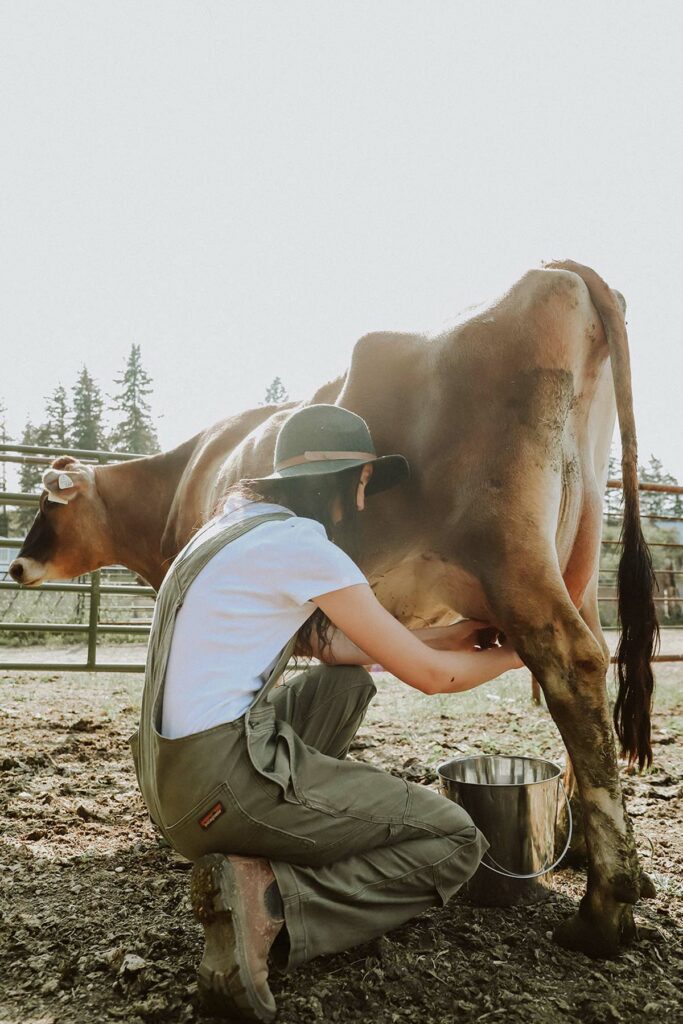
The Inconsistencies of Milk
Most cheese recipes are based on the assumption that the pH of your milk is 6.8. However, during the different phases of a cow’s lactation cycle, the milk pH can vary greatly.
If you’re having a hard time with cheese recipes turning out correctly, this may be a culprit.
I shared my butter making experience with Robyn where I was having a hard time turning my raw cream into butter. It just so happened to be at the end of the summer, just before we were drying Clover up before she calved.
The milk had a great cream line and I was getting enough to make lots of butter. However, I couldn’t get the cream to churn into butter at all, it was like the fat solids would almost separate out, then they would break. The end result was more like a thick whipped cream than butter.
Robyn says this was because during late lactation, the fat globules in the cream actually change. Though it looks like there’s a lot of heavy cream, the fat content isn’t the same and it will be extremely difficult (if not impossible) to churn into butter.

Azure Standard
Azure Standard is the sponsor of today’s podcast, and they are my go-to for so many of the many items we use here on the homestead. Speaking of butter, ever since losing our beloved milk cow this past year, Azure is now my source for butter.
I can get a case of butter and store it in the freezer for an amazing price (as well as the peace of mind of knowing I won’t run out!).
Azure also sells heirloom starter cultures for dairy products like Bulgarian yogurt! If you’ve wanted to learn how to make your own, check out my tutorial on making homemade yogurt here.
If you’re a new Azure Standard customer, you can get 10% off your first order of $50 or more by using coupon code “Melissa10” at checkout.

The Importance of Cheese-Making
Both Robyn and I agree that cheese-making seems to be a lost art. It’s surprising even how many people who own a dairy cow that don’t make homemade cheese.
We think it may be because it seems somewhat of a daunting and confusing process. However, Robyn says when you realize that milk is meant to (and wants to) be turned into cheese it’s an easy way to shift your mindset as to how easy it is.
The Four Steps of Cheese-Making
The basics of cheese-making include these four basic steps:
- You heat the milk back up to the temperature it was when it came out of the udder.
- You add a lactic bacteria or an acid to create an acidic environment.
- You add in rennet (which is actually an enzyme in calves’ stomachs).
- And finally, it forms into a curd.
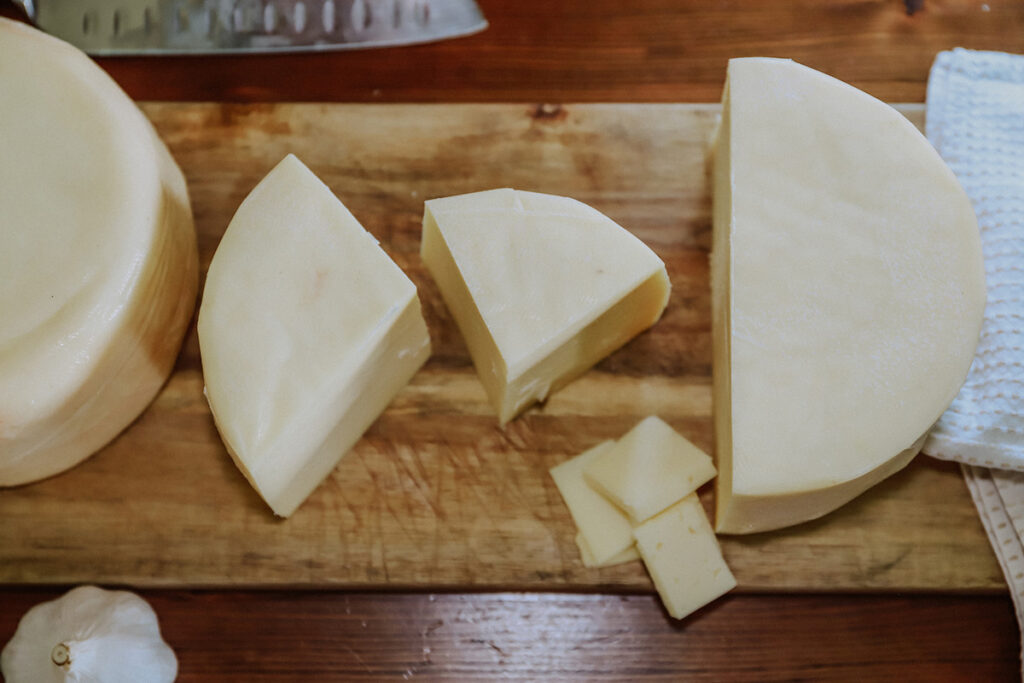
Natural Cheese-Making Day Strategies
Because cheese making is such a long process (not so much with hands-on time, but more with waiting) I compared it to making sourdough bread. Robyn completely agreed.
The first time you look at making a sourdough bread recipe or even learning how to make a sourdough starter it seems so intimidating and confusing. But if you stick with it, you realize it’s not that complicated at all. You even figure out your preferred feeding methods, the type of flour you prefer, and even the recipes you enjoy making (and your family enjoys eating).
Cheese-making can be very similar in this way. Once you learn your recipes and know the steps, you can start a batch of cheese in the morning and know that while the culture is sitting you’ll have an hour to take care of other household chores before moving to the next step.
Another big tip Robyn shares is that she doesn’t make cheese year-round. Very similar to canning, which is generally done one time per year, she makes cheese during the springtime (which is perfect timing for opening enrollment to her class, Milkmaid Society, more on that below!).
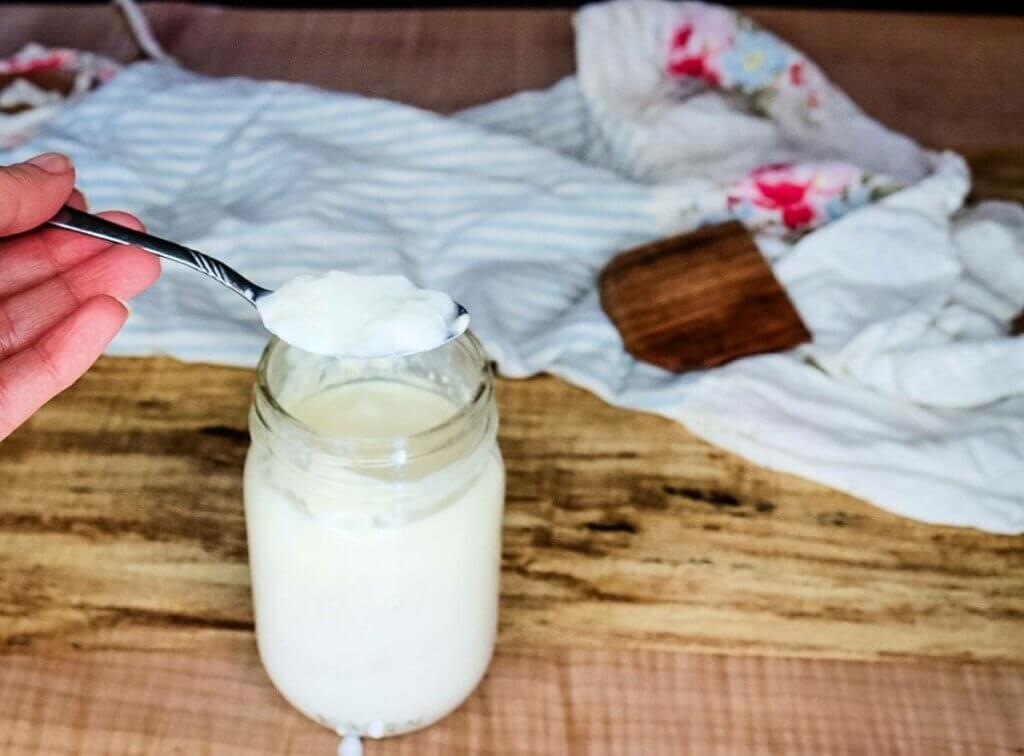
What is Clabber?
Clabber, when fed and nurtured correctly, is similar in consistency to buttermilk. You can think of clabber like you do a sourdough starter. It needs to be fed consistently or else the flavors will be off, it won’t work correctly, and you’ll end up with an undesirable product.
Clabber is a cultured milk product that occurs naturally when you leave raw milk on the counter at room temperature for a few days. The whey separates from the milk solids and curdles as it ferments.
At first glance, it seems the whole jar of milk has gone bad. And for drinking purposes, it has. However, this clabber has so much potential!
After your milk has clabbered, you then take a small spoonful of the clabber and add it to a new container of fresh raw milk. Leave this milk out on the counter until it clabbers and repeat the process until you’re left with a delightful and slightly tangy clabber that’s the consistency of yogurt.
It’s this delicious clabber that can be used in place of yogurt, sour cream, or used as a culture in homemade natural cheese making.
How to make cheese starter culture
You have a few options for cheese starter culture, the first is clabber as stated above. Your other options are cultured buttermilk or cultured yogurt.
Cultured buttermilk is a mesophilic culture and is used for cheeses that don’t require heat. Cultured yogurt is thermophilic and is used for cheese recipes that are heated and require heat above 110 degrees F.

Natural Cheese-Making vs. Cultured Cheese-Making
Robyn is still studying natural cheese-making and shares that she’ll probably still have thousands of questions on the day she dies because there’s so much to learn.
She loves the book The Art of Natural Cheesemaking: Using Traditional, Non-Industrial Methods and Raw Ingredients to Make the World’s Best Cheeses by David Asher. She said it really opened up her eyes to how milk wants to be turned into cheese and to stop using such a “sterile” environment.
After she read this book, Robyn was fortunate enough to take a live class from author David Asher who helped her realize she didn’t quite have the correct process down.
She’d been making cheese from clabber and the flavors weren’t great. It was this live class that made all the difference.
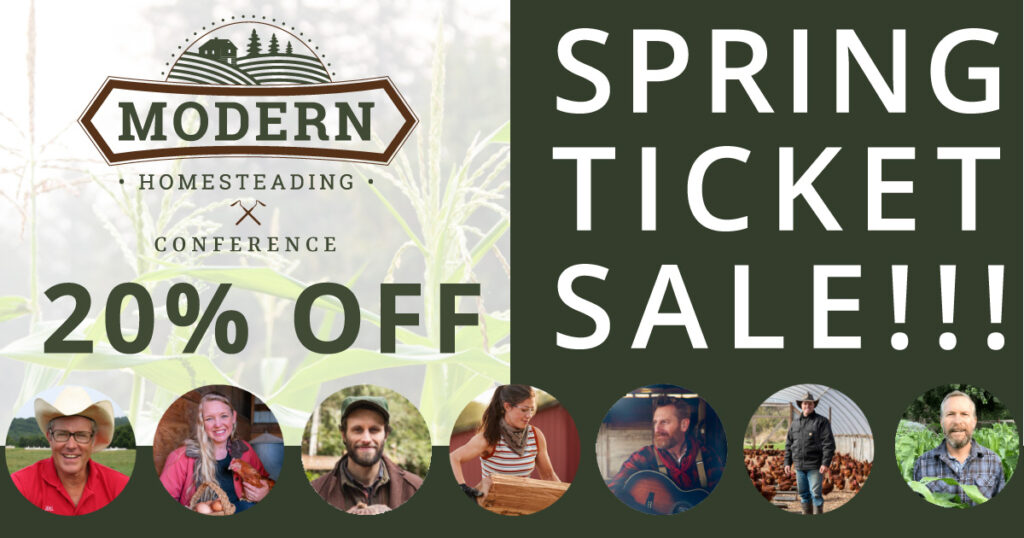
Modern Homesteading Conference
If you’re interested in learning more from Robyn, she is actually going to be a speaker at the Modern Homesteading Conference this year in North Idaho. If you haven’t purchased your tickets yet, you’re in luck! We’re having a Spring sale for 20% off all general admission tickets from March 28-April 3, 2023!
Use coupon code “Spring20” at checkout and receive 20% off your general admission tickets (coupon code not valid for child tickets, family tickets, or VIP passes).
Where to Find Robyn
- Her website, Cheese From Scratch
- Her online membership, Milk Maid Society (currently closed, but opening Spring 2023 so be sure to sign up for her newsletter!)
- Cheese From Scratch on Instagram
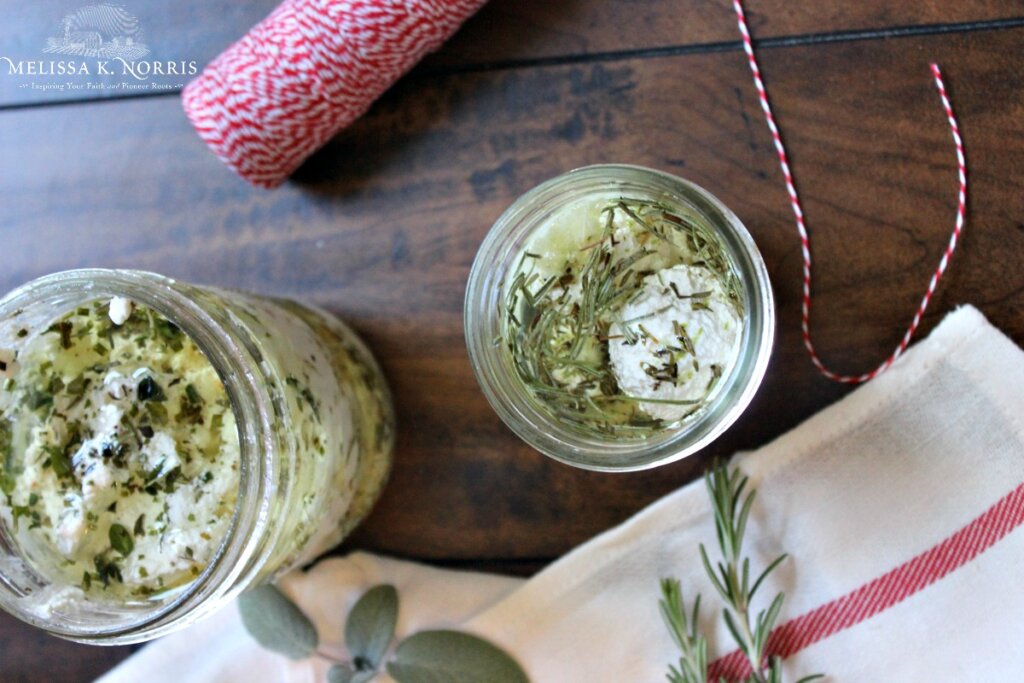
More Posts You May Enjoy:
- How to Make Whey in Four Easy Steps
- How to Smoke Cheese at Home
- How to Make Homemade Mozzarella in 30 Minutes
- Homemade Buttermilk Ranch Dressing (Probiotic)
- Dairy Cow 101: Everything You Need to Know
- Keeping a Family Milk Cow- 8 Things You Need to Know
- Fermented Dairy: Why You Should Be Doing This Now
- How to Preserve Meat, Eggs & Dairy
- How to Make Homemade Yogurt That’s Thick and Creamy
- Homemade Marinated Cheese Balls Recipe- in Less than 5 Minutes
- How to Make Biscuits – Sour Cream Biscuit Recipe from 1940
[fusebox_transcript]
